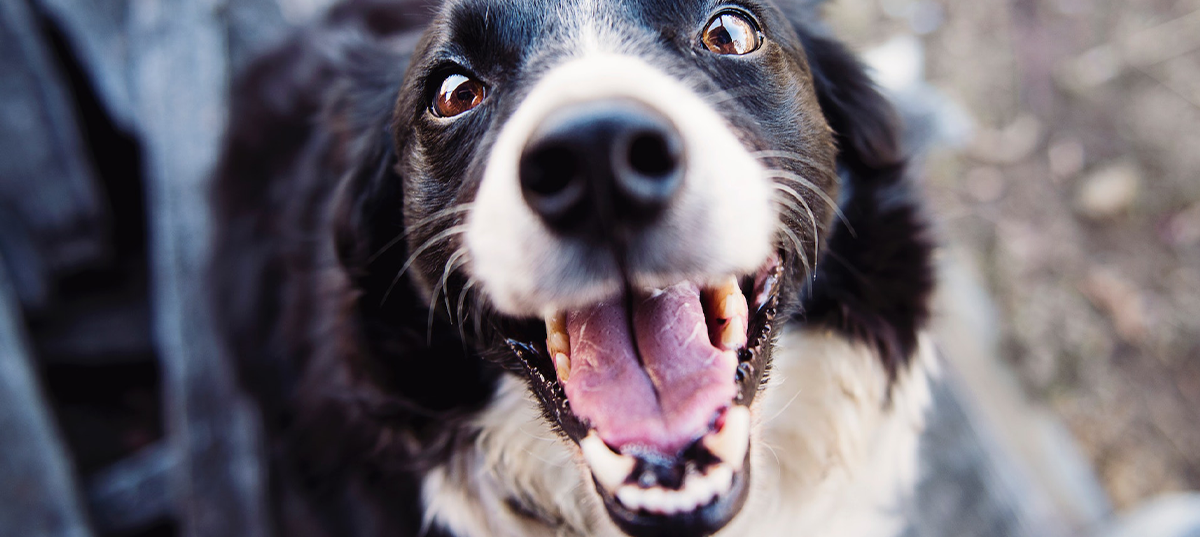How to Brush Your Dog’s Teeth

March 2023
You probably don’t enjoy brushing your own teeth, so the idea of brushing your dog’s teeth may not sound like much fun. But just like humans need to brush their teeth to maintain good oral health, a dog’s teeth should be cleaned regularly, too.
Dogs can suffer from a variety of dental problems, including gum disease, tooth decay, and bad breath. And those are problems that can lead to serious health issues, such as heart disease and kidney problems. And while it’s not as serious of a condition, if your dog’s breath is less than pleasant, brushing can make a huge difference when they come in close for those kisses.
First, a reality check. Don’t go straight to putting a fully-loaded toothbrush in your dog’s mouth and expect them to comply. Like any new trick or behavior, it takes time. First, make sure your dog is comfortable with you touching their mouth and teeth. Give them a treat as you rub their cheeks. Then gently lift a lip and touch their teeth and gums in a brushing motion. Be sure to praise them in a calm voice throughout. Repeat this every day for a week or two.
When it comes to equipment, you’ll need a toothbrush or a silicone finger toothbrush that’s designed for dogs. You’ll also need toothpaste that’s specifically for dogs. Human toothpaste can contain ingredients that are harmful to pets. Get your dog comfortable with both by letting them sniff and taste each long before you actually try brushing their teeth.
Once your dog is comfortable with the equipment you’ll be using and having their mouth and teeth touched, it’s time to start brushing. Choose a time when your dog is calm and relaxed. try kneeling or sitting in front of or to the side of them. Don’t stand above your dog, hold them down, or take a threatening stance. Place a hand on top of their nose and use your thumb and index finger to pull their upper lip up, exposing their teeth.
Brush in a downward motion, away from the gums. With dogs, you only need to brush the outside surface of their teeth (those facing their cheeks). Be gentle, and if your dog gets upset, stop immediately. Give them a break and go back to the earlier steps in the process.
Try to brush their teeth a few times a week and if you can be disciplined about it, daily is best. It should only take you five minutes, at most.
If, despite all your love and patience, your dog isn’t up for having their teeth brushed, don’t fret. Dental chews are your next option. Look for anything that has a VOHC (Veterinary Oral Health Council) seal of approval. For a dental treat to be effective, it should take a dog five to 10 minutes to eat. If your dog ploughs through that Greenie in 3 seconds, it’s not removing plaque and you should try something different.
One additional thing to keep in mind: all the brushing in the world isn’t going to keep your dog’s teeth in perfect condition. Eventually, they’ll need a professional dental cleaning to remove the buildup you can’t see and to check for any underlying gum disease. Most dogs get their first cleaning around three years old.
At VIDA we love pets and all the ways they enhance our lives… which is why we welcome them. If you’re thinking of getting a pet, please reach out to our leasing office to learn more about our pet policy.
